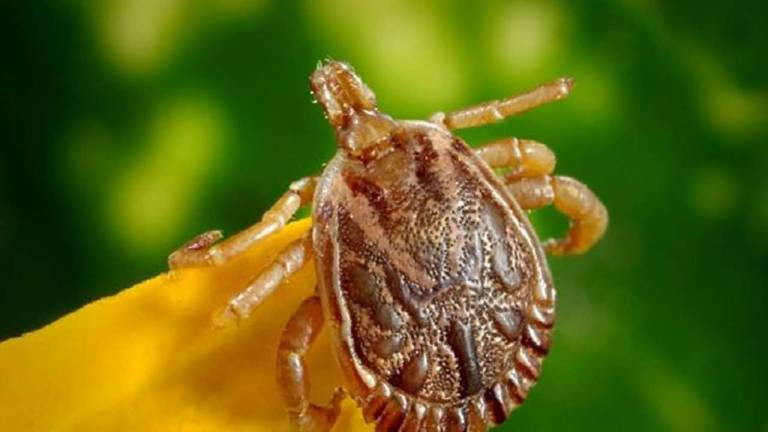New, aggressive tick is now in New Jersey and New York

The longhorned tick, an invasive species that clones itself and is known to suck livestock dry, is spreading fast. It's now been confirmed in New Jersey and New York.
The Lyme Disease Association says the longhorned tick is already known to transmit several human diseases, including spotted fever rickettsiosis, in its native East Asian countries of China, Japan, and Australia. It may be only a matter of time before they become carriers of tick-borne diseases that affect humans, it says.
According to the National Veterinary Services Laboratory in Ames, Iowa, this exotic new tick was first found in the United States in Virginia, appearing on an orphaned calf on a beef farm It was also confirmed in West Virginia in May and in Arkansas in June. It's also in North Carolina.
The tick reached New Jersey in November, when it was found on a sheep farm in Hunterdon County, N.J. Mystery still surrounds its appearance. The species survived the winter. There is no known direct link from the Virginia farm to the New Jersey farm. The longhorned tick has spread to other parts of New Jersey, including Middlesex, Union, Mercer, and Bergen counties.
The longhorned tick reproduces by parthenogenesis, that is, without fertilization. Males are very rare.
The species is dark brown and grows to the size of a pea when fully engorged. Both larval and nymphal stages are very small and difficult to observe with the naked eye. Adult ticks are seen mainly during early summer.
This tick is a serious pest to livestock, says New Jersey Secretary of Agriculture Douglas Fisher. It strikes cattle, horses, farmed deer, sheep, and goats, particularly in New Zealand, as well as wildlife, pets, and humans. The New Jersey Division of Fish and Wildlife is watching to see if the tick has spread to wildlife.
Fisher said farmers should monitor their livestock for the presence of this tick. They should look for decreased growth rates, or signs of anemia.
He said it's still too early to tell how the new tick will affect local residents.
Ticks not trackedMany states have long had surveillance programs for mosquitoes, but there are no programs at all for ticks, says Ben Beard, chief of the CDC’s Bacterial Diseases Branch in the Division of Vector-Borne Diseases. The biggest mosquito-borne disease, West Nile Virus, afflicts only a few thousand people in a year, while Lyme disease, only one of many tick-borne illnesses, afflicts at least 300,000 in a year. The discrepancy may be attributed to the centuries-old history of mosquito-borne diseases, like malaria, while Lyme was first diagnosed only in 1975.
Protect yourselfTristate residents already understand the importance of protecting themselves against the ticks that have long been present in the area, especially the black-legged tick, which spreads Lyme Disease. But Lyme is only one of the host of diseases carried by the several species of ticks found locally. They include babesiosis and anaplasmosis, as well as tularemia, which is spread by the dog tick, among others.
Prevent tick bites whenever you are in areas where ticks may be found. Protect yourself, your family, and your pets from tick bites with these tips:
Know where ticks are: ticks can live in or near wooded or grassy areas or on animals directly.
Use repellent on skin: use EPA-registered insect repellents containing DEET, picaridin, IR3535, oil of lemon eucalyptus, para-menthane-diol, or 2-undecanone. Always follow product instructions.
Treat clothing, boots. and camping gear with permethrin.
Cover up by wearing long sleeves and pants when spending time outdoors and consider tucking pants into socks to prevent ticks from getting under clothes.
Shower as soon as possible after coming indoors to remove unattached ticks.
Inspect your body for ticks and removing ticks immediately.
Treat your pets with veterinarian-approved products to kill or repel ticks. Products are available for domestic animals like dogs and cats, as well as for animals like sheep, goats and cattle.